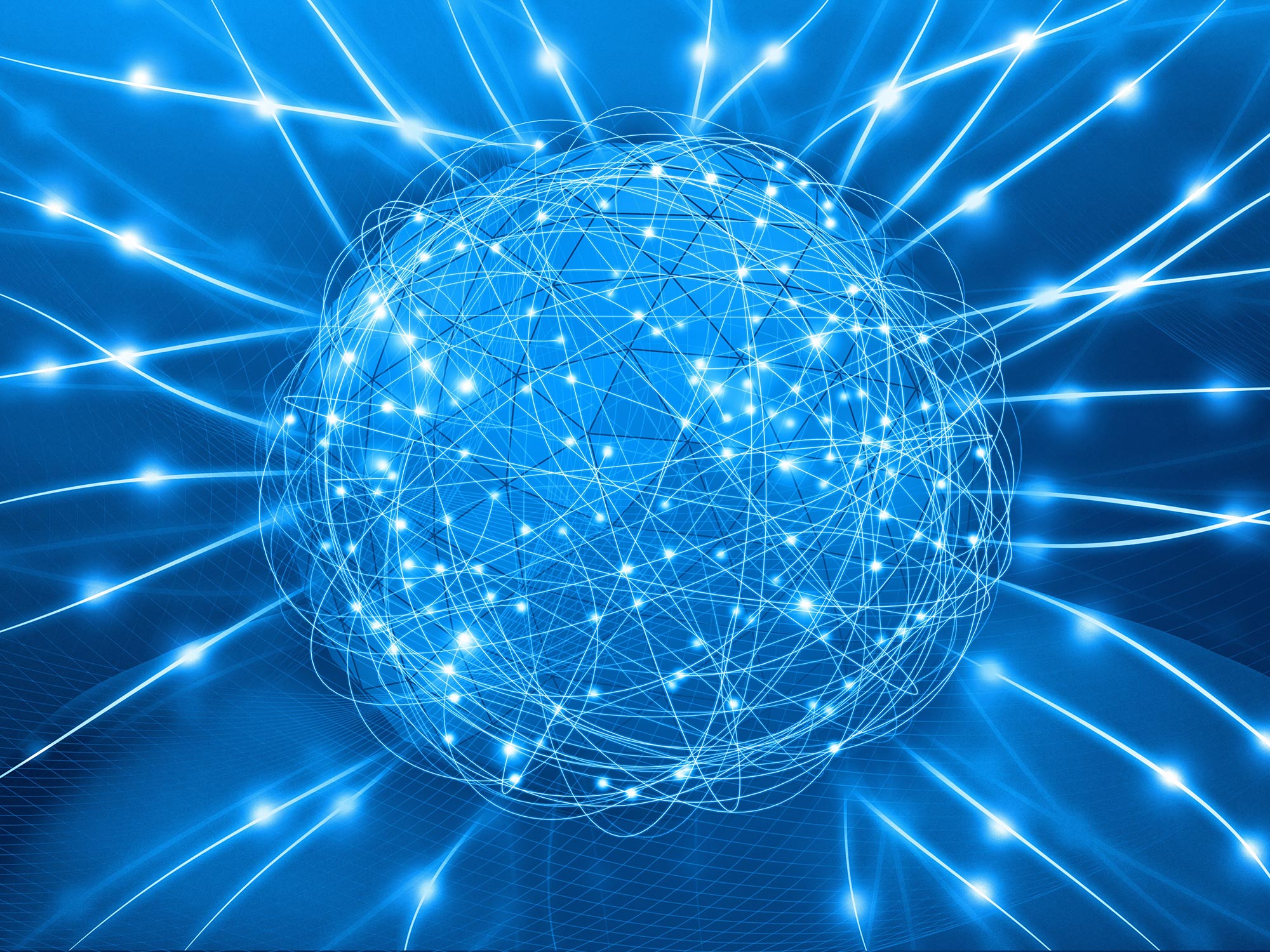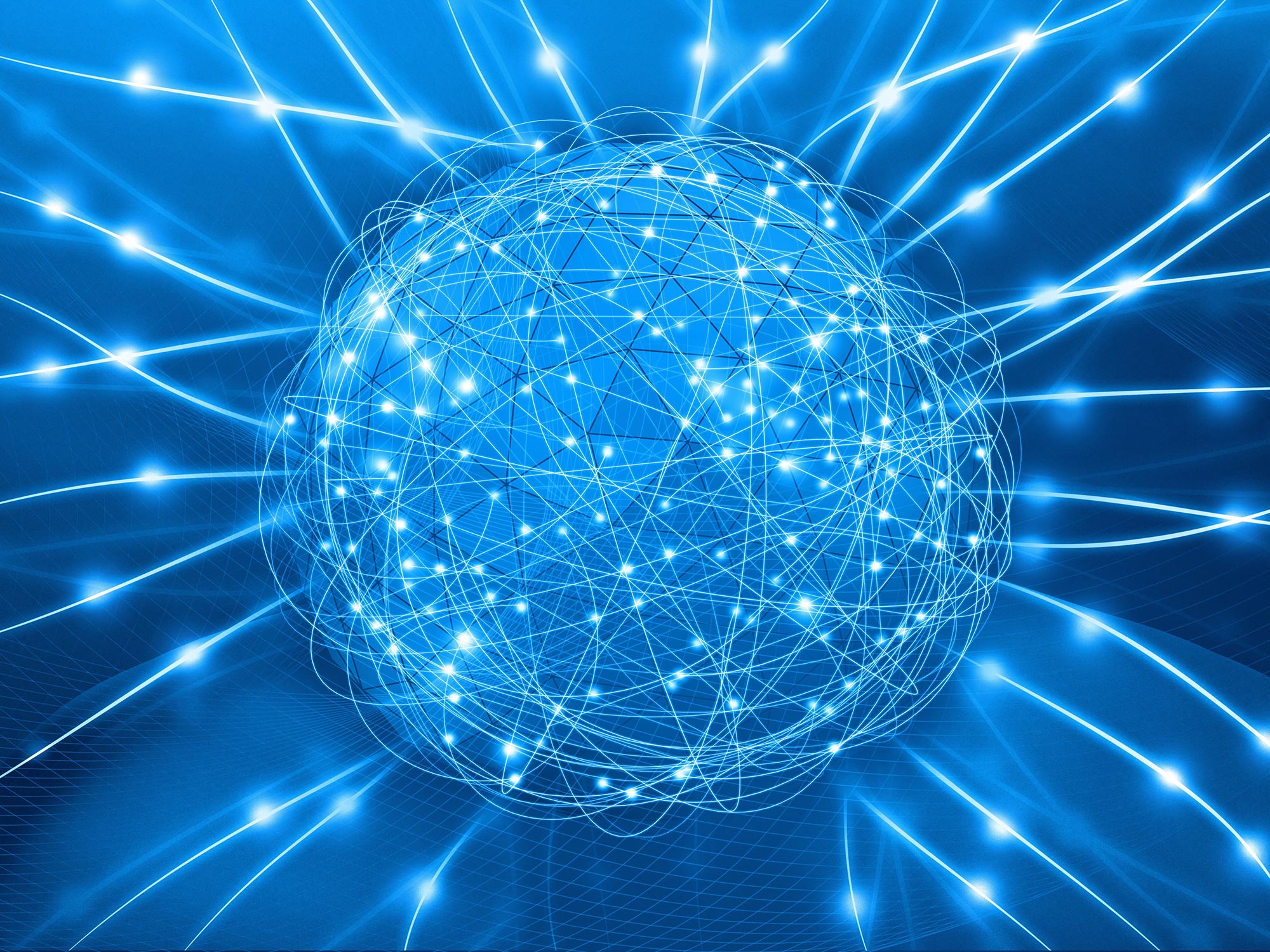
과학자들은 뇌 오가노이드라고 하는 뇌 세포의 3D 배양을 바이오컴퓨터로 사용하는 바이오컴퓨터를 만들기 위해 여러 분야에서 협력하고 있습니다. 그들은 과학 저널에 이 목표를 달성하기 위한 계획을 세웠습니다. 과학의 개척자.
AI의 인상적인 실적에도 불구하고 AI의 계산 능력은 인간의 두뇌에 비하면 미미합니다. 이제 과학자들은 컴퓨팅을 발전시키는 혁신적인 경로를 공개합니다. 즉, 실험실에서 배양한 뇌 오가노이드가 생물학적 장치로 작동하는 오가노이드 지능입니다.
인공 지능은 항상 인간의 두뇌에서 영감을 받았습니다. 이 접근 방식은 매우 성공적인 것으로 입증되었습니다. AI는 의료 상태 진단에서 시 작성에 이르기까지 인상적인 업적을 즐기고 있습니다. 그러나 원래 모델은 계속해서 여러 면에서 기계를 능가합니다. 예를 들어, 우리는 사소한 온라인 사진 퀴즈로 “인간성을 증명”할 수 있는 이유입니다. AI를 두뇌처럼 만들려고 하지 않고 소스로 직행하면 어떨까요?
여러 분야의 과학자들이 뇌 오가노이드라고 하는 뇌 세포의 3D 배양이 생물학적 장치로 작용하는 혁신적인 바이오컴퓨터를 만들기 위해 노력하고 있습니다. 저널에서 이 비전을 달성하기 위한 로드맵을 설명합니다. 과학의 개척자.

다양한 세포 유형의 형광 표지를 사용하여 실험실에서 성장한 뇌 오가노이드의 확대 이미지. (분홍색 – 뉴런, 빨간색 – 희돌기교세포, 녹색 – 성상 세포, 파란색 – 모든 세포 핵). 출처: Thomas Hartung, Johns Hopkins University
Johns Hopkins University의 Thomas Hartung 교수는 “우리는 이 새로운 학제 간 분야를 ‘유기 지능'(OI)이라고 부릅니다.”라고 말하면서 “최고의 과학자 커뮤니티가 이 기술을 개발하기 위해 모였습니다. 강력하고 효율적인 바이오 컴퓨팅.”
뇌의 소기관은 무엇이며 왜 좋은 컴퓨터를 만들까요?
뇌 오가노이드는 실험실에서 세포 배양의 한 유형입니다. 오가노이드는 “미니 브레인”은 아니지만 학습 및 기억과 같은 인지 기능에 필수적인 뉴런 및 기타 뇌 세포와 같은 뇌 기능 및 구조의 주요 측면을 공유합니다. 또한 대부분의 세포 배양은 평평하지만 소기관은 3차원 구조를 가지고 있습니다. 그 결과 배양 세포 밀도가 1,000배 증가하여 뉴런이 더 많은 연결을 형성할 수 있습니다.
그러나 뇌 오가노이드가 뇌를 그렇게 잘 모방한다고 해도 왜 그렇게 좋은 컴퓨터를 만드는 것일까요? 결국 컴퓨터는 두뇌보다 더 똑똑하고 빠르지 않습니까?

유기적 지능: 바이오컴퓨팅 그래프의 새로운 영역. 출처: Frontiers/John Hopkins University
“실리콘 기반 컴퓨터는 확실히 숫자가 더 나은 반면 두뇌는 학습에 더 뛰어납니다.”라고 Hartung은 설명했습니다. 예를 들어 알파고 [the AI that beat the world’s number one Go player in 2017] 160,000개의 게임 데이터로 훈련되었습니다. 이렇게 많은 게임을 경험하려면 175년 이상 하루에 5시간씩 게임을 해야 합니다.”
두뇌는 우수한 학습자일 뿐만 아니라 더 에너지 효율적입니다. 예를 들어 AlphaGo 훈련에 소비되는 에너지의 양은 활동적인 성인을 10년 동안 유지하는 데 필요한 것보다 많습니다.
“뇌는 또한 2,500테라바이트로 추정되는 정보를 저장할 수 있는 놀라운 용량을 가지고 있습니다.”라고 Hartung은 덧붙였습니다. 우리는 작은 칩에 더 많은 트랜지스터를 담을 수 없기 때문에 실리콘 컴퓨터의 물리적 한계에 도달했습니다. 그러나 뇌는 완전히 다른 방식으로 연결되어 있습니다. 1,015개 이상의 연결 지점을 통해 연결된 약 1,000억 개의 뉴런이 있습니다. 현재 기술과 비교했을 때 엄청난 강도 차이입니다.”

유기적 지능: 바이오컴퓨팅 그래프의 새로운 영역. 출처: Frontiers/John Hopkins University
유기 지능을 갖춘 바이오컴퓨터는 어떤 모습일까요?
Hartung에 따르면 기존 뇌 소기관은 OI를 위해 크기가 커질 필요가 있습니다. 그들은 각각 약 50,000개의 세포를 포함하는 매우 작습니다. OI의 경우 그 숫자를 1000만 개로 늘려야 합니다.”
이와 병행하여 저자는 세포 기관과 의사 소통하는 기술, 즉 정보를 보내고 생각하는 것을 읽는 기술도 개발하고 있습니다. 저자는 생명 공학 및[{” attribute=””>machine learning, as well as engineer new stimulation and recording devices.

Organoid intelligence requires diverse technologies to communicate with brain organoids infographic. Credit: Frontiers/John Hopkins University
“We developed a brain-computer interface device that is a kind of an EEG cap for organoids, which we presented in an article published last August. It is a flexible shell that is densely covered with tiny electrodes that can both pick up signals from the organoid, and transmit signals to it,” said Hartung.
The authors envision that eventually, OI would integrate a wide range of stimulation and recording tools. These will orchestrate interactions across networks of interconnected organoids that implement more complex computations.
Organoid intelligence could help prevent and treat neurological conditions
OI’s promise goes beyond computing and into medicine. Thanks to a groundbreaking technique developed by Noble Laureates John Gurdon and Shinya Yamanaka, brain organoids can be produced from adult tissues. This means that scientists can develop personalized brain organoids from skin samples of patients suffering from neural disorders, such as Alzheimer’s disease. They can then run multiple tests to investigate how genetic factors, medicines, and toxins influence these conditions.

Organoid intelligence will advance medical research and innovation infographic. Credit: Frontiers/John Hopkins University
“With OI, we could study the cognitive aspects of neurological conditions as well,” Hartung said. “For example, we could compare memory formation in organoids derived from healthy people and from Alzheimer’s patients, and try to repair relative deficits. We could also use OI to test whether certain substances, such as pesticides, cause memory or learning problems.”
Taking ethical considerations into account
Creating human brain organoids that can learn, remember, and interact with their environment raises complex ethical questions. For example, could they develop consciousness, even in a rudimentary form? Could they experience pain or suffering? And what rights would people have concerning brain organoids made from their cells?

‘Embedded ethics’ will ensure responsible development of organoid intelligence infographic. Credit: Frontiers/John Hopkins University
The authors are acutely aware of these issues. “A key part of our vision is to develop OI in an ethical and socially responsible manner,” Hartung said. “For this reason, we have partnered with ethicists from the very beginning to establish an ‘embedded ethics’ approach. All ethical issues will be continuously assessed by teams made up of scientists, ethicists, and the public, as the research evolves.”
How far are we from the first organoid intelligence?
Even though OI is still in its infancy, a recently-published study by one of the article’s co-authors – Dr. Brett Kagan of the Cortical Labs – provides proof of concept. His team showed that a normal, flat brain cell culture can learn to play the video game Pong.
“Their team is already testing this with brain organoids,” Hartung added. “And I would say that replicating this experiment with organoids already fulfills the basic definition of OI. From here on, it’s just a matter of building the community, the tools, and the technologies to realize OI’s full potential,” he concluded.
Reference: “Organoid intelligence (OI): the new frontier in biocomputing and intelligence-in-a-dish” by Lena Smirnova, Brian S. Caffo, David H. Gracias, Qi Huang, Itzy E. Morales Pantoja, Bohao Tang, Donald J. Zack, Cynthia A. Berlinicke, J. Lomax Boyd, Timothy D. Harris, Erik C. Johnson, Brett J. Kagan, Jeffrey Kahn, Alysson R. Muotri, Barton L. Paulhamus, Jens C. Schwamborn, Jesse Plotkin, Alexander S. Szalay, Joshua T. Vogelstein, Paul F. Worley and Thomas Hartung, 27 February 2023, Frontiers in Science.
DOI: 10.3389/fsci.2023.1017235

“요은 베이컨과 알코올에 대한 전문 지식을 가진 닌자입니다. 그의 탐험적인 성격은 다양한 경험을 통해 대중 문화에 대한 깊은 애정과 지식을 얻게 해주었습니다. 그는 자랑스러운 탐험가로서, 새로운 문화와 경험을 적극적으로 탐구하며, 대중 문화에 대한 그의 열정은 그의 작품 속에서도 느낄 수 있습니다.”








